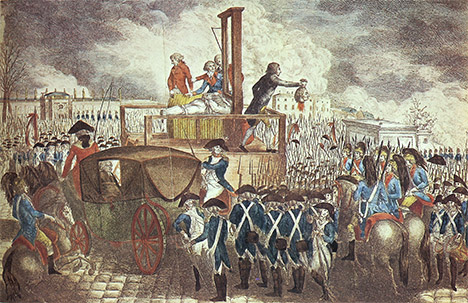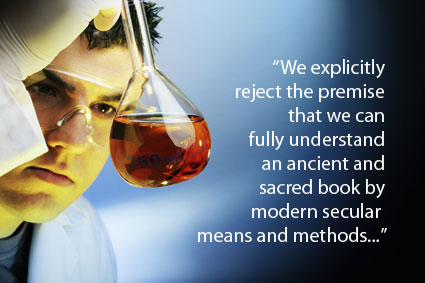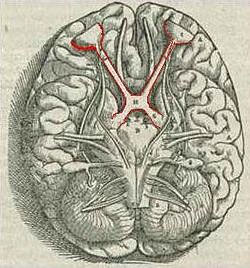Scapegoating as Resistance to Change

An excerpt from a new book, Metropolitan Manifesto, by Rich Bledsoe.
Institutions say they want change, but this is at best a schizophrenic desire. Change requires pain and nobody wants pain.

An excerpt from a new book, Metropolitan Manifesto, by Rich Bledsoe.
Institutions say they want change, but this is at best a schizophrenic desire. Change requires pain and nobody wants pain.
.
“The modernist sees the Bible not as a revelation from God to man but as a history of certain (arbitrary) thoughts of men about God, wrapped in environment-friendly disposable packaging. Theology becomes a process of wringing the text for these abstract truths. These ‘truths’ are refined out of the ‘flux’ of the Biblical history and defined by their inability to contradict our own thinking.
 .
.
“Modernity has for many moderns been a singularly joyless place… And no wonder: Continue reading
“It often seems to me that the night is much more
alive and richly colored than the day.”
—Vincent Van Gogh in a letter to his brother Theo in 1888
Last week I had the privilege of viewing seven Van Goghs, all in one room, including Starry Night Over the Rhone, the depth and texture of which has to be seen to be believed.
The impressionists went out of their way not to paint what they saw. They stretched and strained the norms to communicate how it made them feel. They were expounding—explaining—reality. As Jordan writes, made in the image of God, man is the only symbol which is also a symbol-maker. [1]
This post has been slain and resurrected for inclusion in my 2015 book of essays, Inquietude.
from Manifesto on Psalms and Hymns
by Douglas Wilson (Introduction to the Cantus Christi Hymnal)
A common practice in our day is for Christians to speak of the “culture wars.” By this they usually mean the political and cultural skirmishes between leftist secular thinking and the more moderate and traditional thinking of believers. But the problem is that the phrase “culture wars” is a particularly inept way to refer to this problem. Continue reading

A quote from Theological Poetics: Typology, Symbol and the Christ, by Warren Gage of Knox Seminary:
A modern introduction to biblical typology should begin inductively with several examples of certain shadows and types from Old Testament passages widely acknowledged to be prefigurative in character, seeking to understand those types as interpreted by the authors of the New Testament. After a number of such passages are examined, an index of the “criteria of certainty” should be proposed to distinguish legitimate “types” from suspected “allegories.” Principles of interpretation should then be announced, along with the obligatory caveats necessarily qualifying tentative proposals, all of which should be rationally defensible and clearly recognizable to reputable scholarship in the field.
Our approach will be quite different. Continue reading

This is the intro to one JBA’s Amazon booklist. Too good a quote to pass up:
“In recent years postliberal theology and certain strands of Reformed thought have seen typology and chiasm as an essential method of biblical study.
While some forms of postmodernity are helpful to the church, most are not as avant garde as they pretend.
Ironically, liberals and most conservatives have the same method of bible study: you the individual must learn as many facts about the text as possible, importing back into the text foreign paradigms (or more accurately, bad foreign paradigms).
Typology, however, provides a subtle but deadly maneuver against modernity: it challenges modernity’s use of reason and forces it to think in terms of story and symbol, which by definition it can’t do.”
Yes, conservatives, he means you.
(Pic: the optic chiasma)
The white stone mentioned in Revelation 2:17 was always a mystery to me. There are plenty of commentators who make lame suggestions as to its meaning (they sound a bit like a student making up answers during an exam!), but James Jordan got me thinking about it along the lines of its subtle use in the Old Testament. I intend to cover this in a few posts, and consequently may ramble even a little more than usual, but everything is connected in the Bible’s symbol language. This is a bit of a journey, but I am sure we will find it rewarding. Oh, and you will need to switch off your modernistic mind and use your imagination. You know, that thing you only use when you read or watch fiction? You can use it to understand the Bible as well. I know, scholars most often don’t. To cover their inability to make much sense of texts such as the one we are about to inhale, they pretend the writings are a bit primitive. Why do we put one-eyed, colour-blind pencil pushers in charge of the kaleidoscope?
Or, Reading the Bible without imposing your own worldview.
It seems we either read the Bible carefully but with the blinkers of remnant higher criticism (modernism), or we ‘get’ the narrative and typology but disregard the basic boundaries of responsible interpretation (postmodernism). Rich Lusk writes:
Biblical Theology requires us to learn to read the biblical narrative from within. We are insiders to the story of Scripture. It’s our story. We have to learn to read the Bible canonically. We have to allow the Word to absorb the world rather than allowing the world to absorb the Word. We have to take Scripture’s outlook as normative rather than imposing another worldview on our reading of Scripture. We must learn to read the Bible organically, in terms of itself. We should read the Bible the same way Peter, Susan, Lucy, and Edmond would read The Chronicles of Narnia: as a story not only for us, but about us.
Reading the Bible organically means reading it intertextually and typologically. Intertextual reading listens for echoes of and allusions to other passages within the canon, using Scripture to interpret Scripture. Typological reading looks for repeating patterns within the unfolding storyline of Scripture. Biblical typology is focused on totus Christus — the whole Christ, head and body, Jesus and the church. Typology means reading the Bible on its own terms, as a revelation of the suffering and glory of Christ (Lk. 24). As we move from type(s) to antitype, there is both correspondence and escalation.
Read his full article here.